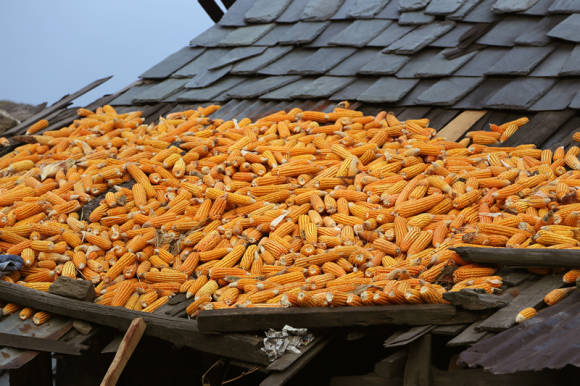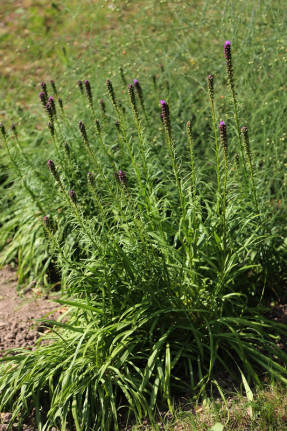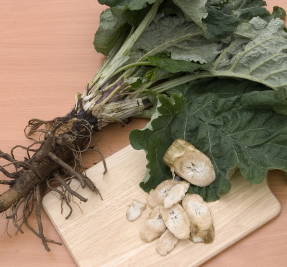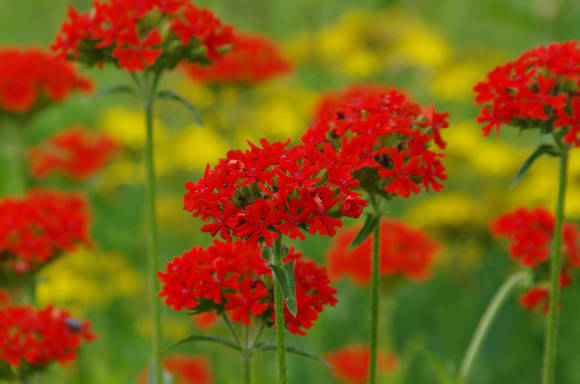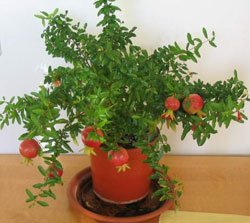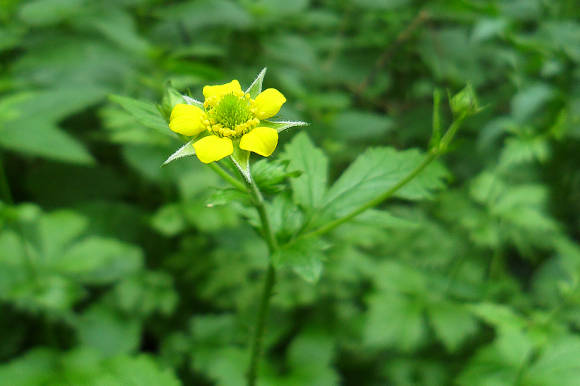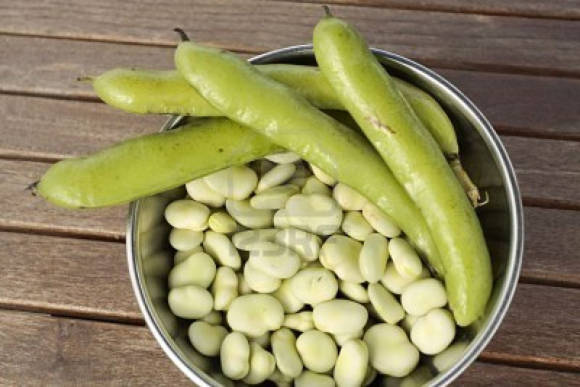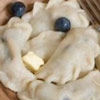Botanical description and habitat
 Valerian officinalis (Valeriana officinalis) - a perennial herb of the valerian family (Valerianaceae) with a short vertical rhizome, from which numerous roots extend. Stem straight, ribbed, hollow inside, up to 1.5 m high. Leaves are opposite, pinnate, with 3-11 linear-lanceolate large-toothed leaves. The flowers are pale pink, small, fragrant, collected in branched corymbose inflorescences. Fruits are small, flat, brown tufted achenes. Blooms from June to August; fruits ripen in August - September.
Valerian officinalis (Valeriana officinalis) - a perennial herb of the valerian family (Valerianaceae) with a short vertical rhizome, from which numerous roots extend. Stem straight, ribbed, hollow inside, up to 1.5 m high. Leaves are opposite, pinnate, with 3-11 linear-lanceolate large-toothed leaves. The flowers are pale pink, small, fragrant, collected in branched corymbose inflorescences. Fruits are small, flat, brown tufted achenes. Blooms from June to August; fruits ripen in August - September.She is found almost throughout Russia. It grows in coastal and floodplain meadows, forest edges, clearings, along the banks of water bodies and marshes, in ravines and among thickets of bushes. However, digging out small roots in dense turf is quite difficult. Therefore, it is easier to grow valerian in culture.
Varieties... The All-Russian Institute of Medicinal and Aromatic Plants has developed highly productive varieties Maun and Ulyana. European countries have their own selection achievements.
Growing
 Many farmers close to big cities focus on vegetable production. Meanwhile, there are medicinal crops that, firstly, are very technological and fit well into vegetable crop rotations, and secondly, they give a very good income. It is to such crops that Valerian officinalis can be attributed. In our age of stress and the return to phytopreparations, its raw materials will always be in demand. Therefore, we will consider the cultivation process from two sides - on ordinary summer cottages of 6 acres and on a farm field.
Many farmers close to big cities focus on vegetable production. Meanwhile, there are medicinal crops that, firstly, are very technological and fit well into vegetable crop rotations, and secondly, they give a very good income. It is to such crops that Valerian officinalis can be attributed. In our age of stress and the return to phytopreparations, its raw materials will always be in demand. Therefore, we will consider the cultivation process from two sides - on ordinary summer cottages of 6 acres and on a farm field.The plant is demanding on soil fertility and moisture. The area should be well lit and sufficiently humid. Preferred predecessors are winter cereals or vegetables grown with high doses of organic fertilizers. The field should be free of rhizome and root-sprouting weeds and well leveled during pre-sowing preparation, since the seeds are rather small and must be sown without deep planting. Heavy and floating soils are undesirable. With the formation of a crust, seedlings appear with great difficulty. The presence of rhizome and root-sprouting weeds in the future greatly complicates both weeding and care, as well as cleaning the roots during harvesting.
On a personal plot, you can select a damp place for valerian somewhere near the fence and sow it on the beds in rows with a distance of 60 cm between them, or plant seedlings at a distance of 20-30 cm between plants in a mixborder with other medicinal plants. On personal plots for personal use, it is advisable for valerian to be placed in wet places of the site near the fence or in the background of the mixborder, where it will not block anything during flowering. Do not place the plant in front of the windows of the house. Flowers have a peculiar smell that not everyone may like.
For autumn plowing, 30-50 tons of compost or rotted manure and 200-250 kg of superphosphate, 150-200 kg of potassium salt per 1 hectare, and about 2 buckets of compost and 30-40 g of superphosphate and 10- 15 g of potassium nitrate per 1 sq. meter.
During storage, the seeds quickly lose their germination and should be used in the year of harvest: that is, they were harvested in the summer, sown in the next spring. If you get older seeds, then their germination will be very poor. It makes sense to sow even two-year-old seeds thicker.
You can sow valerian in three terms: in early spring, in summer and before winter. The choice of the term depends on the availability of free time. In the spring, vegetables are usually taken away from all forces and there is no longer any time for medicinal time. Good results are obtained when sowing in late summer with fresh, freshly harvested seeds.But this period is more suitable not for commodity crops, but for seed crops and for amateur gardeners. Before winter, valerian is sown in the Non-Chernozem Zone at the end of October - beginning of November in pre-made grooves, when the soil is already frozen. But there are some difficulties here - periodic thaws or rapid melting of snow with the risk of washing away all crops. Spring is perhaps the optimal sowing time, which is carried out at the earliest possible date.
The seeding rate is 6-8 kg / ha for spring and summer sowing and 8-10 for podwinter. The depth of their embedding is not more than 1 cm. Seedlings appear at 7-10 days at sufficiently high daily temperatures in spring and in the presence of moisture in the soil in summer. Further care: 1-2 manual weeding, and on fields 2-4 inter-row cultivation. To get large roots with too dense seedlings, thinning can be done, leaving 10-15 plants per 1 meter of a row. For autumn cultivation, 150-200 kg of superphosphate are introduced. In the language of a home pharmaceutical garden, this means that you should add 30-40 g of superphosphate and stick it into the soil with a hoe. Before the cold weather, valerian manages to form a rosette of basal leaves and a well-developed root system.
In the second year of the growing season, in early spring, fertilizing is carried out with nitrogen fertilizers (150-200 kg / ha of ammonium nitrate). Valerian blooms in June and forms seeds in July. But, in order to get large roots, they carry out "vershoking" - cut the buds during the budding period. In this case, a good harvest of raw materials can be obtained by the end of the second year.
The harvest is dug up in the fall using a pitchfork, and in large areas by potato diggers. The roots are thoroughly washed in running water, but do not soak them for a long time, as this will wash out the active ingredients. After that, the raw material is cut and dried in a well-ventilated house or dryer at a temperature not exceeding 35-40 ° C. At higher temperatures, there is a large loss of essential oil, which is one of the most important active substances. The yield of raw materials is 1-3 t / ha. The shelf life of raw materials is 3 years.
Seeds ripen uncookedly, within 30-45 days. As soon as the first ripe seeds appear in the inflorescence, they are cut off with part of the stem, tied in bunches and hung or laid out on a tarp in the attic for ripening.
Pests and diseases
 Valerian officinalis is damaged by beet and valerian aphids, winter moth, meadow moth, beet bug. Seedlings can be severely damaged by sandy sludge. In some years, plants are affected by powdery mildew (weakly), rust, ramullariosis and fusarium. The most unpleasant is white rot, when cotton-like formations, consisting of the mycelium of the fungus, appear on the inside and outside of the base of the stem. Diseased plants die.
Valerian officinalis is damaged by beet and valerian aphids, winter moth, meadow moth, beet bug. Seedlings can be severely damaged by sandy sludge. In some years, plants are affected by powdery mildew (weakly), rust, ramullariosis and fusarium. The most unpleasant is white rot, when cotton-like formations, consisting of the mycelium of the fungus, appear on the inside and outside of the base of the stem. Diseased plants die.In most cases, it is possible to cope with pests using preventive methods, and seeds are etched from root rot in production. It is better not to work with disinfectants at home, but to limit yourself to processing with a solution of the biofungicide Fitosporin-M.
The rest of the diseases will not be particularly annoying if you follow some of the requirements of agricultural technology: do not sow a crop in one place several times, when spots appear, increase the dose of potash and phosphorus fertilizers, dig up the soil with a turnover of the layer, since the infection is in the depths and dies.
Another trick is the use of substances that increase the immunity of plants and, accordingly, their resistance to diseases, but at the same time harmless to humans and animals, as well as stimulation of growth, which makes them more competitive in comparison with weeds. Now there are a lot of such funds, in the literature there is information about the successful use of arachidonic and hydroxycinnamic acids on valerian. About the properties of valerian - in the article The use of valerian in official and traditional medicine.
